Jammu & Kashmir Switch to Hindi
J&K to boost River Cruise Tourism
Why in News?
The Inland Waterways Authority of India (IWAI) under the Ministry of Ports, Shipping, and Waterways has signed a Memorandum of Understanding (MoU) with the Jammu and Kashmir government to enhance river cruise tourism on three National Waterways in the region.
Key Points
- Objective of the Agreement:
- The MoU aims to enhance tourism, generate employment, and boost economic growth in Jammu and Kashmir.
- It will introduce a new mode of leisure and budget tourism on the region’s rivers.
- National Waterways in J&K:
- Jammu and Kashmir has three declared national waterways:
- River Chenab (NW-26)
- River Jhelum (NW-49)
- River Ravi (NW-84)
- Jammu and Kashmir has three declared national waterways:
- Development of River Cruise Infrastructure:
- The IWAI has allocated Rs 100 crore for the development of river cruise tourism in J&K.
- This initiative aligns with the vision to promote cruise tourism from Kashmir to Kerala and Assam to Gujarat, announced during the Second Meeting of the Inland Waterways Development Council (IWDC).
- Infrastructure to be Developed:
- IWAI will provide waterside infrastructure, including:
- Ten floating jetties
- Chenab River (NW-26): Two jetties at Akhnoor and Reasi (near Jammu).
- Jhelum River (NW-49): Seven jetties at Pantha Chowk, Zero Bridge, Amira Kadal, Shah-e-Hamdan, Safa Kadal/Chattabal Shrine, Sumbal Bridge, and Gund Prang (in Srinagar and Bandipora).
- Ravi River (NW-84): One jetty at Sohar.
- Landside facilities such as waiting halls and passenger amenities.
- IWAI will provide waterside infrastructure, including:
- Navigation and Safety Measures:
- IWAI will:
- Develop navigational fairways through dredging where required.
- Provide navigational aids for safe vessel movement.
- Conduct regular hydrographic surveys.
- Responsibilities of Jammu and Kashmir:
- Provide land for landside infrastructure construction.
- Facilitate statutory clearances for project implementation.
- Appoint cruise operators for the identified river sectors.
- Seek technical assistance from IWAI when necessary.
- IWAI will:
- National Expansion of Waterways Infrastructure:
- Major efforts include:
- Capacity augmentation of NW-1, NW-2, NW-3, and NW-16.
- Developing inland waterway terminals, fairways, navigational locks, and night navigation facilities.
- Major efforts include:
- Boosting Cruise Tourism Across India:
- IWAI has undertaken multiple projects to promote cruise tourism, especially on River Ganga and River Brahmaputra.
- The successful launch of MV Ganga Vilas, the world’s longest river cruise, showcases this commitment.
Inland Waterways Authority of India
- It came into existence on 27th October 1986 for development and regulation of inland waterways for shipping and navigation.
- It primarily undertakes projects for development and maintenance of IWT infrastructure on national waterways through grants received from the Ministry of Shipping.


Haryana Switch to Hindi
Cases Under Cow Protection Act
Why in News?
The Haryana government has decided to fast-track the disposal of cases registered under the Cow Protection Act by establishing four special courts with jurisdiction across the state.
Key Points
- Establishment of Special Courts:
- The Governor, with the Punjab and Haryana High Court’s approval, has set up special courts in Nuh, Palwal, Ambala, and Hisar.
- These courts will be led by the senior-most Additional District and Sessions Judge and Civil Judge handling regular cases.
- These courts will fast-track cases related to offences under the Haryana Gauvansh Sanrakshan and Gausamvardhan Act, 2015.
- Jurisdiction of Special Courts:
- Nuh Court: Will oversee cases from Nuh, Rewari, Narnaul, Charkhi Dadri, and Bhiwani districts.
- Palwal Court: Will cover Palwal, Faridabad, Gurugram, Jhajjar, Rohtak, and Sonepat districts.
- Ambala Court: Will have jurisdiction over Ambala, Panchkula, Panipat, Yamunanagar, Kurukshetra, and Karnal districts.
- Hisar Court: Will handle cases from Hisar, Jind, Fatehabad, Sirsa, and Kaithal districts.
- Haryana's Cow Protection Law:
- The Haryana Gauvansh Sanrakshan and Gausamvardhan Act was enacted in 2015.
- The law strictly prohibits the slaughter of cows and aims to reduce the consumption of beef.
- It prohibits slaughter, offering for slaughter, or causing the slaughter of cows. However, killing a cow in self-defense or by accident is not considered slaughter under the law.
- Role of Special Task Force:
- The Special Cow Protection Task Force is responsible for enforcing the Act in Haryana.
- The task force actively collects information on cattle smuggling and slaughter from the public and takes action accordingly.


Rajasthan Switch to Hindi
Coalition of Cities for Circularity (C-3)
Why in News?
Recently, the Union Minister of Housing and Urban Affairs announced the Coalition of Cities for Circularity (C-3) .
Key Points
- About the Coalition (C-3):
- It is a multinational alliance for city-to-city collaboration, knowledge-sharing and private sector partnerships for sustainable urban development .
- It aims to support cities in the Asia-Pacific region in addressing challenges related to waste management and resource efficiency .
- The Prime Minister of India proposed the formation of a working group of member countries to finalise the structure and operational framework of the C-3 Alliance to ensure effective implementation of the initiative.
- Announcement:
- This was announced during the 12th Regional 3R and Circular Economy Forum on Asia and the Pacific in Jaipur .
- At the inaugural ceremony held in Jaipur, a landmark Memorandum of Understanding (MoU) was signed for CITIIS 2.0, which will mark a milestone in urban sustainability initiatives.
- Under this initiative, agreements worth Rs 1,800 crore were announced for City Investments to Innovate, Integrate and Sustain 2.0 (CITIIS 2.0) , which will benefit 18 cities in 14 states .
12th Regional Forum Meeting
- About: It is a regional platform that promotes 3R (Reduce, Reuse, Recycle) principles and circular economy practices across the Asia-Pacific region.
- It brings together policymakers, industry leaders, researchers, and partners to advance resource efficiency strategies.
- Historical Context: It was launched in 2009 to promote 3R principles and resource efficiency.
- The Hanoi 3R Declaration (2013-2023) set 33 voluntary goals for a resource-efficient and circular economy.
- Theme: Realizing Circular Societies Towards Achieving SDGs and Carbon Neutrality in Asia-Pacific.
- Objectives: Discuss and agree a voluntary, non-binding “3R and Circular Economy Declaration (2025-2034)” for a resource-efficient, low-carbon, and resilient Asia-Pacific.
- Discuss and pave way towards realization of a Circular Economy Alliance Network (CEAN) towards Zero Waste Cities and Societies.
- Discuss circular economy strategies to achieve net-zero targets and SDGs.
Circular Economy
- A circular economy is a system where materials never turn into waste and natural resources are regenerated.
- In this system, products and materials are kept in continuous circulation through processes such as maintenance, reuse, refurbishment, manufacturing, recycling and composting .
- The aim of the circular economy is to promote economic growth free from overexploitation of limited resources .
- It proves helpful in effectively dealing with global challenges like climate change, biodiversity loss, waste management and pollution .


Uttar Pradesh Switch to Hindi
MYUVA Scheme
Why in News?
The Uttar Pradesh government distributed loans worth Rs 100 crore to 2500 beneficiaries of Gorakhpur and Basti divisions under Mukhyamantri Yuva Udyami Vikas Abhiyan.
- Besides this, toolkits were also provided to 2100 trainees under the ODOP (One District One Product) scheme.
Key Points
- About MYUVA Scheme:
- Under this scheme, the state government aims to create one lakh young entrepreneurs every year by providing interest-free loans for projects up to Rs 5 lakh .
- The government has allocated Rs 1,000 crore in the budget for the financial year 2024-25 to support this initiative .
- It is designed to empower educated and skilled youth across the state, facilitate self-employment opportunities and promote the setting up of new MSMEs (Ministry of Micro, Small and Medium Enterprises) .
- Beneficiaries who have received training under various government-run schemes such as Vishwakarma Shram Samman Yojana , One District One Product Training and Toolkit Scheme , SC, ST, OBC Training Scheme and skill upgradation run by Uttar Pradesh Skill Development Mission will be eligible for assistance.
- Additionally, youth having certificates, diplomas and degrees from educational institutions will also be entitled to benefits under the scheme.
- On successful repayment of the first loan, the units will be eligible for the second stage of funding, where a composite loan up to double the initial amount or Rs 7.50 lakh can be provided.
- Under this scheme, the state government aims to create one lakh young entrepreneurs every year by providing interest-free loans for projects up to Rs 5 lakh .
One District One Product Programme(ODOP)
- Introduction:
- ODOP is an initiative to promote economic development at the district level by promoting and branding one product from each district of the country .
- It was launched on 24 January 2018, on the first foundation day of Uttar Pradesh.
- Objective:
- Preserve and develop local arts/skills and promote creativity.
- Increase in income and local employment (resulting in reduced migration for employment ).
- Improvement in product quality and skill development .
- Transforming products in artistic ways (through packaging, branding).
- Linking production with tourism (live demos and sales outlets – gifts and souvenirs).
- To resolve the issues of economic differences and regional imbalances


Madhya Pradesh Switch to Hindi
Naxalites To Be Eradicated in Madhya Pradesh
Why in News?
The Chief Minister of Madhya Pradesh organized a high-level meeting to fulfill the resolution of Naxal-free India by the year 2026 and gave necessary guidelines.
Key Points
- Government Commitment:
- The Chief Minister clarified that the state government is serious and active to completely eradicate Naxalism in Madhya Pradesh.
- Instructions
- The efforts of the state government should be coordinated for the economic and social progress of the residents of Naxal-affected areas.
- To enhance communication facilities, priority should be given to installation of mobile towers.
- Approval should be given for an increase in Hawk Force strength to establish new security camps .
- Eradication of the Maoist problem from the state should be given top priority and concerted efforts should be made for this.
- In order to facilitate transportation in remote areas of Naxal-affected districts, the ongoing road construction work should be completed soon.
- Apart from this, the Chief Minister has directed to keep a strict vigil on Naxal activities and to review it regularly at the level of Police Headquarters and District Administration.
- Coordination between States:
- The meeting discussed joint efforts by Madhya Pradesh, Chhattisgarh, Maharashtra, Andhra Pradesh and Telangana, reflecting growing inter-state cooperation to combat Naxalism.
Naxalism
- Introduction:
- The term Naxalism originated from the Naxalbari village of West Bengal .
- It began as a revolt against local landlords who had beaten up a farmer over a land dispute.
- The movement soon spread to less developed areas of eastern India like Chhattisgarh, Odisha and Andhra Pradesh.
- Left Wing Extremists (LWE) are known as Maoists across the world and Naxalites in India.
- Objective:
- They advocate the overthrow of the Indian government through armed revolution and the establishment of a communist state based on Maoist principles
- They view the state as oppressive, exploitative and serving the interests of the ruling elite and seek to redress socio-economic grievances through armed struggle and people's war.



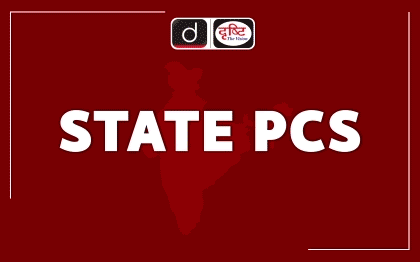
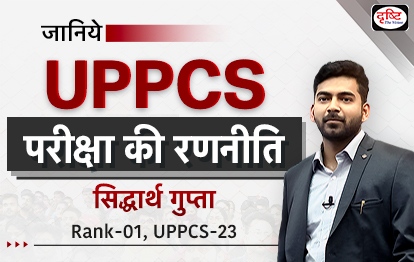

%20MPPCS%202025%20Desktop%20E.jpg)
%20MPPCS%202025%20Mobile%20E%20(1).jpg)

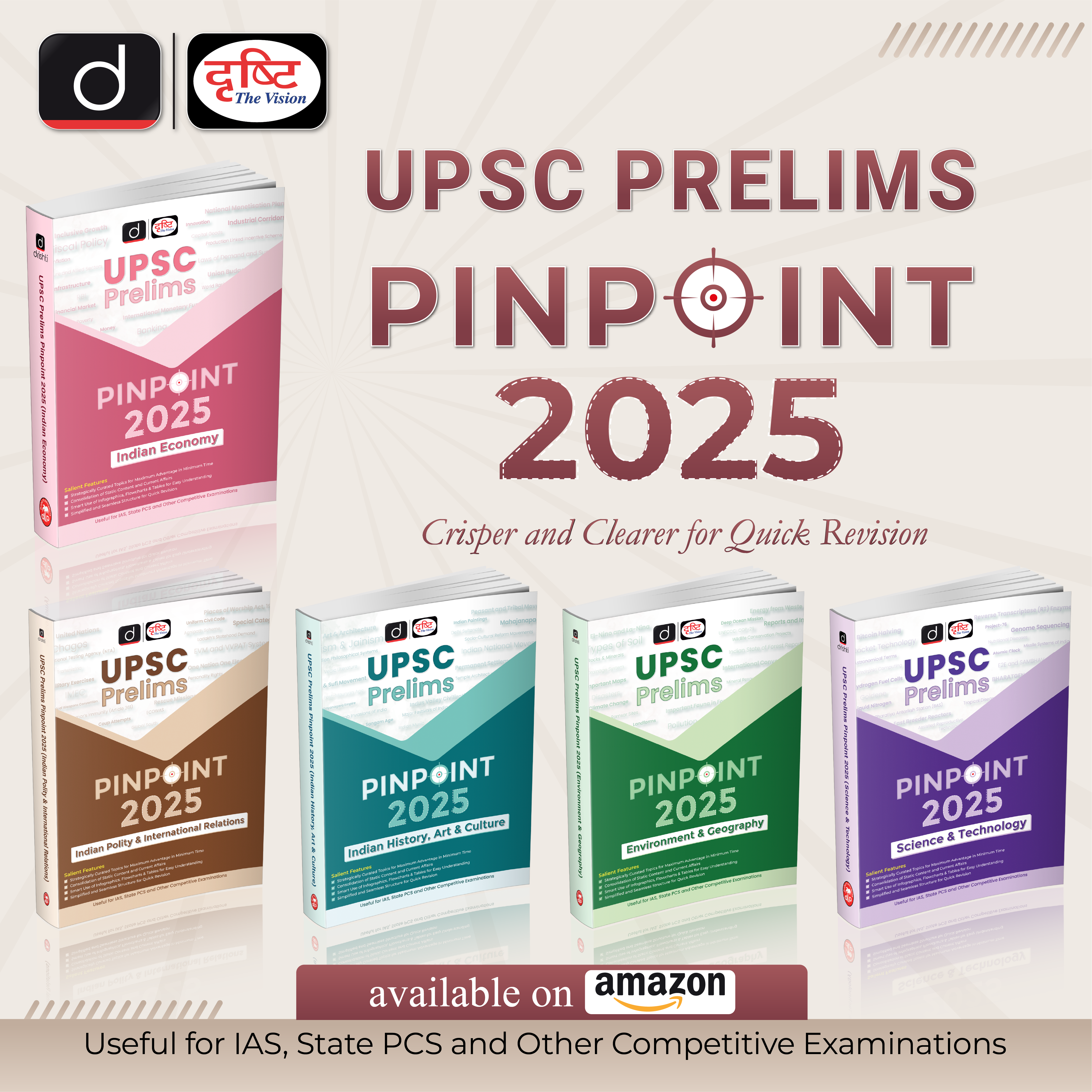







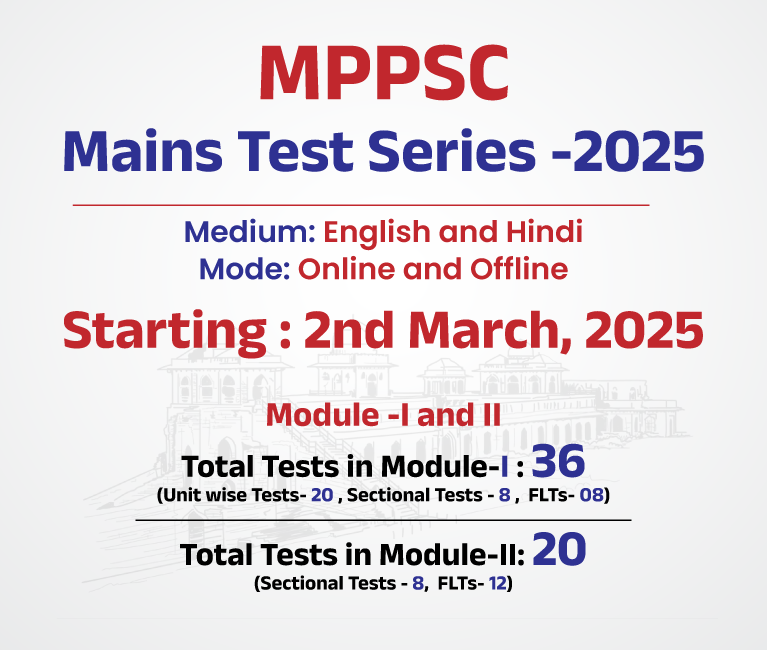
.png)
.png)





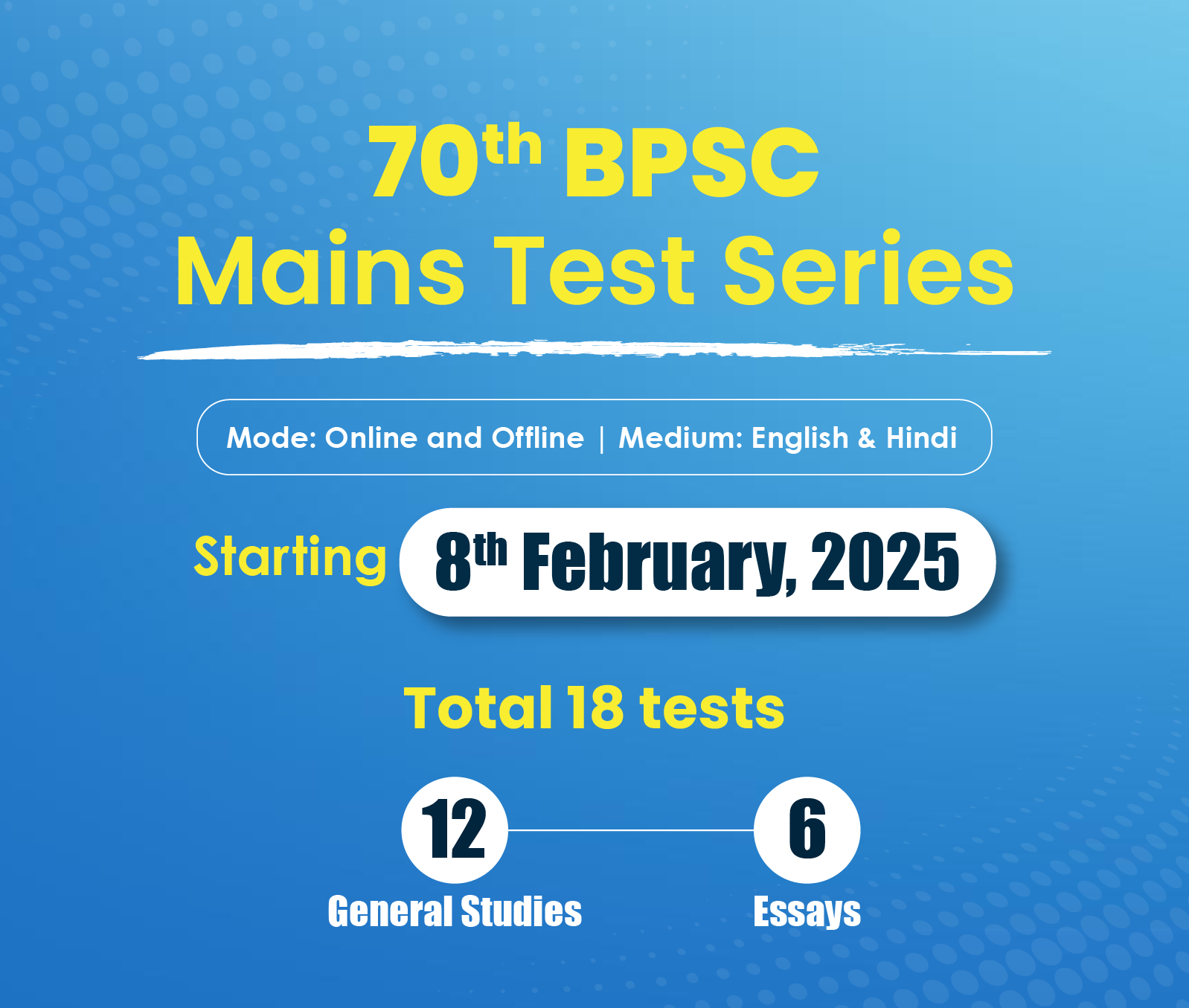





 PCS Parikshan
PCS Parikshan

